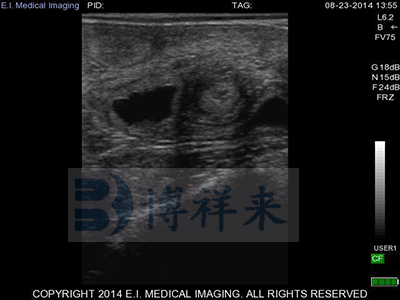Accurate pregnancy diagnosis is essential in veterinary practice, particularly for livestock and companion animals. It enables timely decisions regarding animal management, nutrition, and healthcare, thereby enhancing reproductive efficiency and economic outcomes. Various diagnostic methods are employed, each with its own advantages and limitations. This article explores the primary techniques used in veterinary pregnancy diagnosis, focusing on their applications, accuracy, and practical considerations.

1. Transrectal Palpation
Transrectal palpation is one of the oldest and most commonly used methods for pregnancy diagnosis in large animals, especially cattle. This technique involves the manual examination of the uterus through the rectal wall to detect changes indicative of pregnancy.
Timing and Accuracy: Skilled practitioners can detect pregnancy as early as 30 to 40 days post-breeding. The accuracy of this method largely depends on the examiner's experience and the animal's condition.
Advantages: It is a cost-effective and immediate method that does not require specialized equipment.
Limitations: Early or improper palpation can increase the risk of embryonic loss. Additionally, certain uterine conditions, such as pyometra or mucometra, can mimic pregnancy signs, leading to false positives.
2. Ultrasonography
Ultrasonography has become a standard tool in veterinary pregnancy diagnosis due to its non-invasive nature and high accuracy.
Timing and Accuracy: Pregnancy can be detected as early as 25 to 30 days post-breeding. Ultrasonography allows visualization of the embryo, fetal heartbeat, and assessment of fetal viability.
Advantages: It provides detailed information about the pregnancy, including fetal number, age, and health status. It also helps differentiate between pregnancy and other uterine conditions.
Limitations: The accuracy of ultrasonography depends on the operator's skill and the quality of the equipment. Additionally, the initial cost of purchasing ultrasound machines can be high.

bovine fetus at 30 days gestation
3. Hormonal Assays
Hormonal assays involve measuring specific hormones associated with pregnancy, providing indirect evidence of gestation.
Progesterone Testing: Progesterone levels can indicate the presence of a functional corpus luteum, which is essential for maintaining pregnancy. However, high progesterone levels can also occur in non-pregnant animals due to other physiological conditions, making this test more suitable for identifying non-pregnant animals.
Pregnancy-Associated Glycoproteins (PAGs): PAGs are produced by the placenta and can be detected in the blood of pregnant animals as early as 28 days post-breeding. This method offers high accuracy and is useful for early pregnancy detection.
Relaxin Testing in Dogs: In canines, relaxin is a hormone produced exclusively during pregnancy. Blood tests for relaxin can confirm pregnancy as early as 25 to 30 days post-breeding. This method is specific and reliable for detecting pregnancy in dogs.
4. Radiography
Radiography, or X-ray imaging, is primarily used in small animal practice to confirm pregnancy and estimate fetal numbers.
Timing and Accuracy: Fetal skeletal structures become visible on radiographs around 42 to 45 days post-breeding. Radiography is particularly useful for determining litter size in dogs and cats.
Advantages: It provides a clear image of the fetal skeletons, aiding in planning for parturition.
Limitations: Radiography cannot assess fetal viability and is less effective in early pregnancy stages.
5. Abdominal Palpation in Small Animals
In small animals like dogs and cats, abdominal palpation can be used to detect pregnancy.
Timing and Accuracy: Palpation is most effective between 25 to 35 days post-breeding when the uterine swellings are distinguishable.
Advantages: It is a simple and cost-effective method that requires minimal equipment.
Limitations: Accuracy depends on the practitioner's experience, and factors like obesity or tense abdominal muscles can hinder effective palpation.
Conclusion
Selecting the appropriate method for pregnancy diagnosis in veterinary practice depends on various factors, including the species, stage of gestation, available equipment, and practitioner expertise. Combining multiple diagnostic approaches can enhance accuracy and provide comprehensive information for effective reproductive management.
References
Partners in Reproduction. "Cattle Pregnancy & Diagnosis." https://www.partners-in-reproduction.com/reproductive-physiology/cattle/pregnancy-diagnosis/
University of Florida IFAS Extension. "Pregnancy Diagnosis on Beef Cattle Today." https://edis.ifas.ufl.edu/publication/AN394
Panhandle Research, Extension and Education Center. "Pregnancy diagnosis in heifers and cows provides management options." https://preec.unl.edu/pregnancy-diagnosis-heifers-and-cows-provides-management-options
MSD Veterinary Manual. "Pregnancy Determination in Dogs and Cats." https://www.msdvetmanual.com/management-and-nutrition/management-of-reproduction-dogs-and-cats/pregnancy-determination-in-dogs-and-cats
UC Davis School of Veterinary Medicine. "Pregnancy Diagnosis in the Bitch." https://healthtopics.vetmed.ucdavis.edu/health-topics/canine/pregnancy-diagnosis-bitch
tags:
Text link:https://www.bxlultrasound.com/ns/799.html


